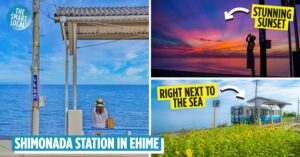Tateyama Kurobe Alpine Route
Tateyama Kurobe Alpine Route (立山黒部アルペンルート) is a unique route in Japan that offers visitors a spectacular view of the Northern Japan Alps and an unforgettable hiking experience.The best time to visit is in spring as the weather won’t be unbearably cold and you still get to trek through tons of snow.
Our guide will feature the top attractions along the route, as well as useful information such as what to bring, how to buy tickets, and how to get there, to ease the planning process for your trip to Tateyama Kurobe Alpine Route.
1. Tateyama Snow Corridor
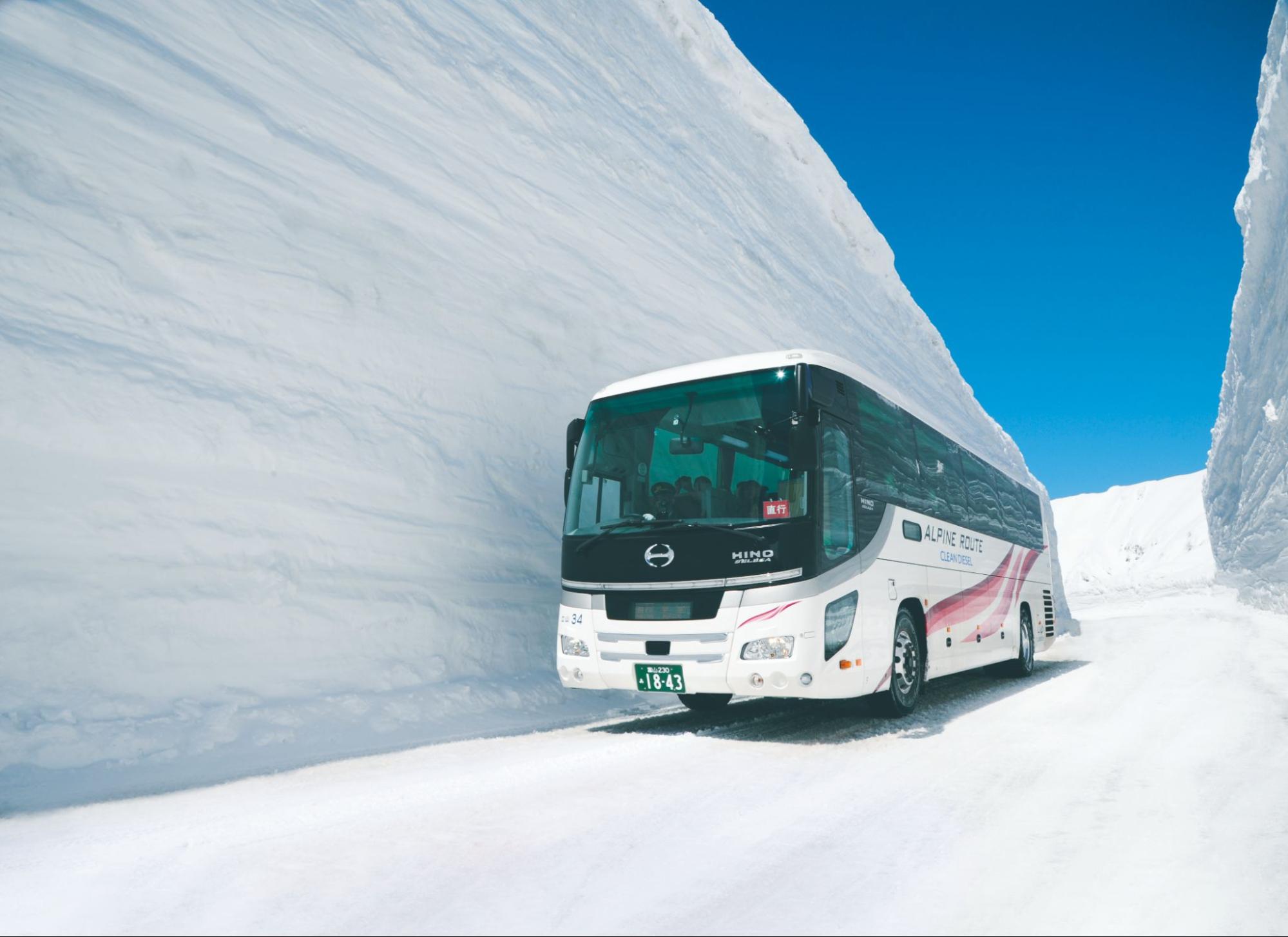 Image credit: Tateyama Kurobe Alpine Route
Image credit: Tateyama Kurobe Alpine Route
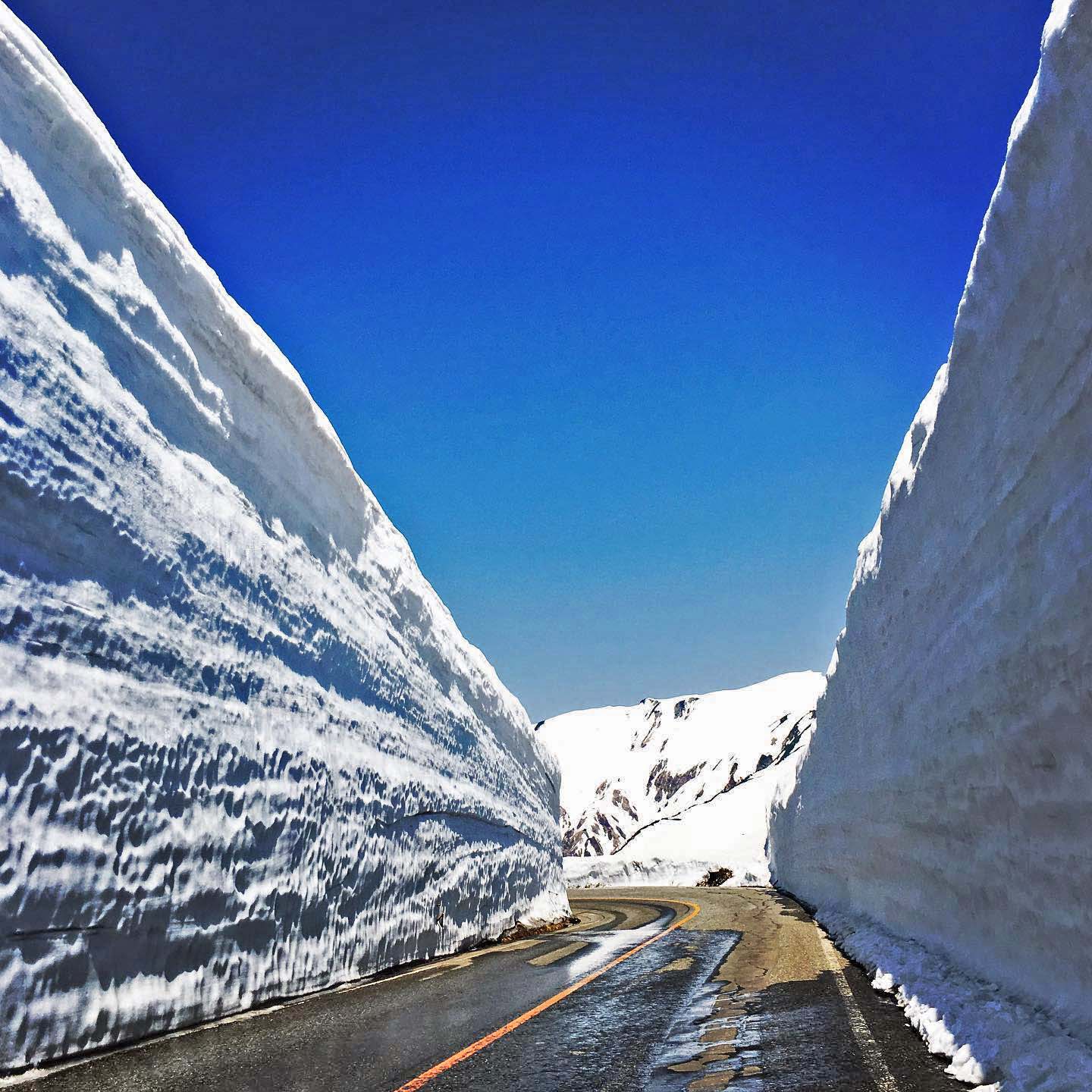 Image adapted from: @oufat
Image adapted from: @oufat
Tateyama is known for its mystical snow corridor, where 18m-tall snow walls tower over you while snow-capped mountains loom in the distance.
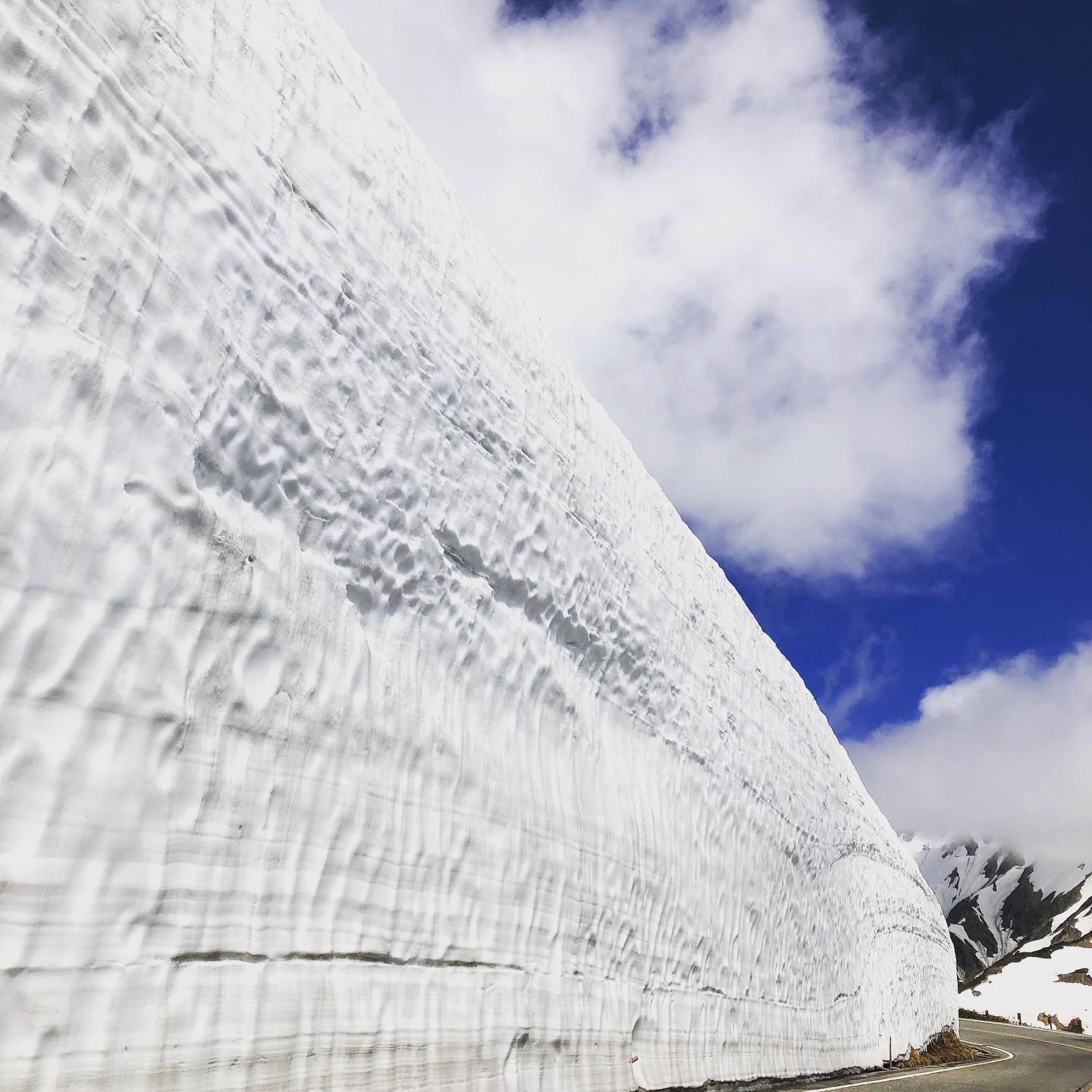 Image credit: @yatagarasu130
Image credit: @yatagarasu130
The snow corridor is only open to visitors from mid-April till mid-June. If you wish to see the snow walls at their peak, we recommend visiting in April before they start to melt as the weather gets warmer.
2. Kurobe Dam
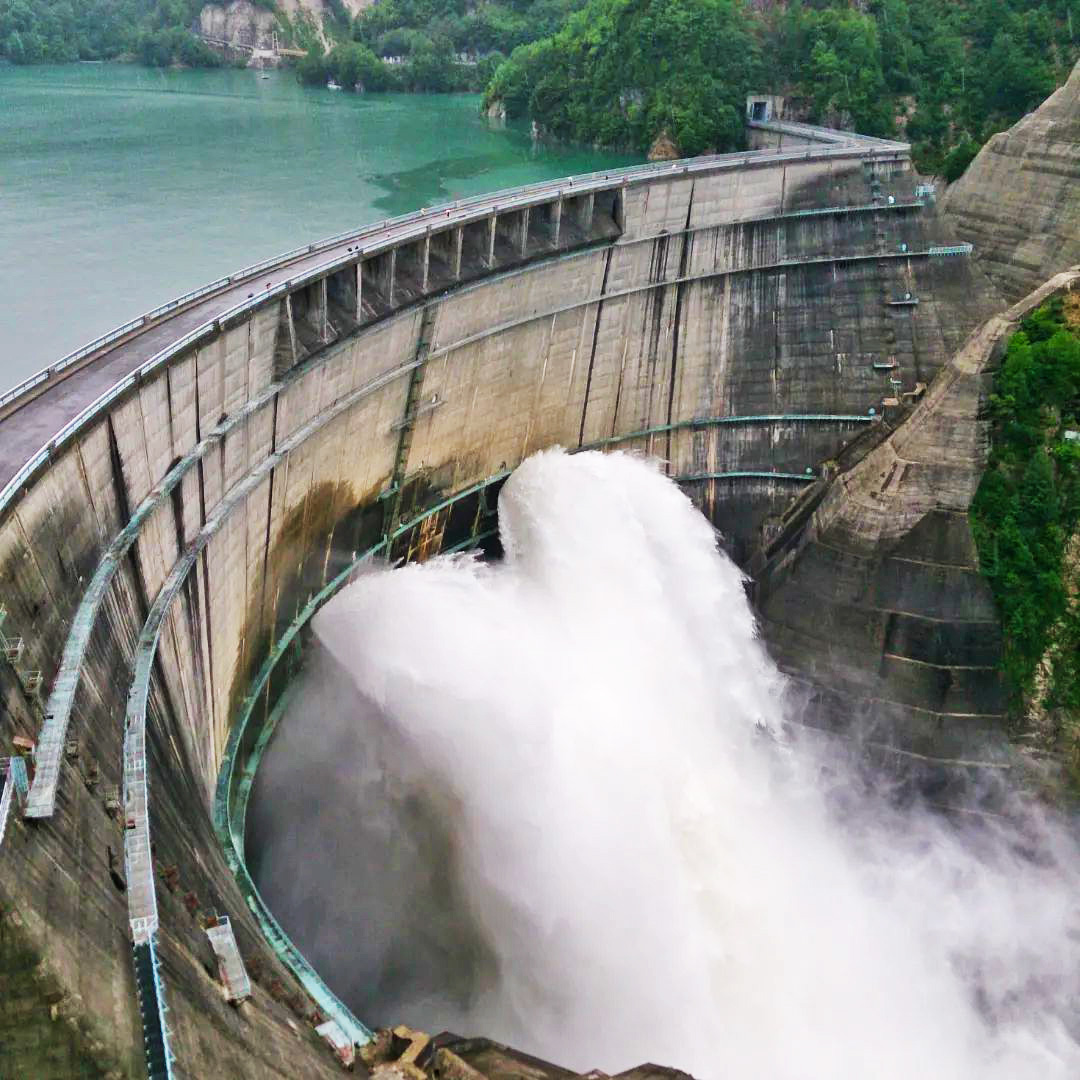 Image adapted from: @nao.m.s0527
Image adapted from: @nao.m.s0527
Standing at 186m, Kurobe Dam (黒部ダム) is the tallest dam in Japan and was constructed over a period of 7 years, starting from 1956.
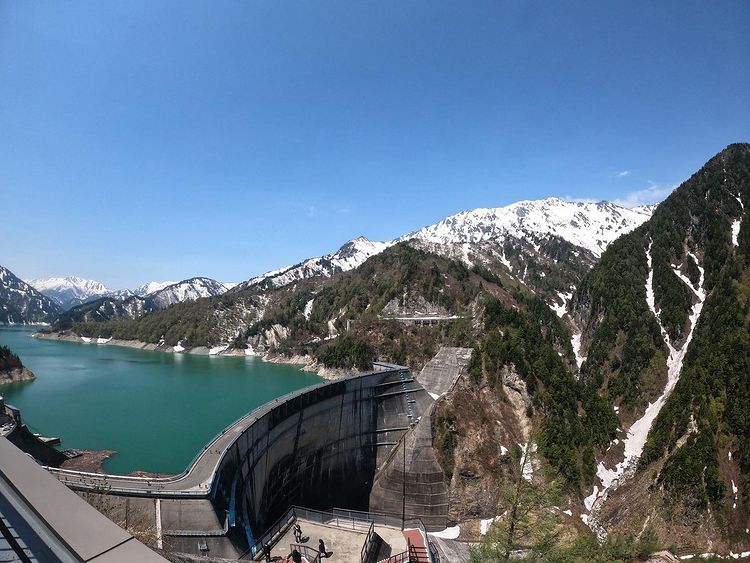
Image credit: @terutabi_0125
The process of building the dam was filled with a myriad of difficulties, starting with the fact that it took place in a post-war Japan that was struggling to recover. The dam supports a hydropower plant which supplies electricity to the Kansai region.
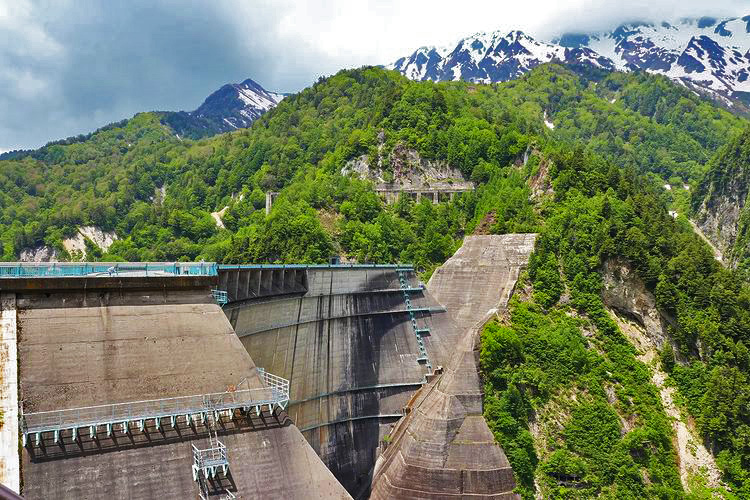
Image adapted from: @advectionfog_tama
At the top of the dam stands an observation deck that provides a stunning birds-eye view of the dam in its natural surroundings, though not all visitors choose to visit it as it’s a steep climb.
3. Murodo
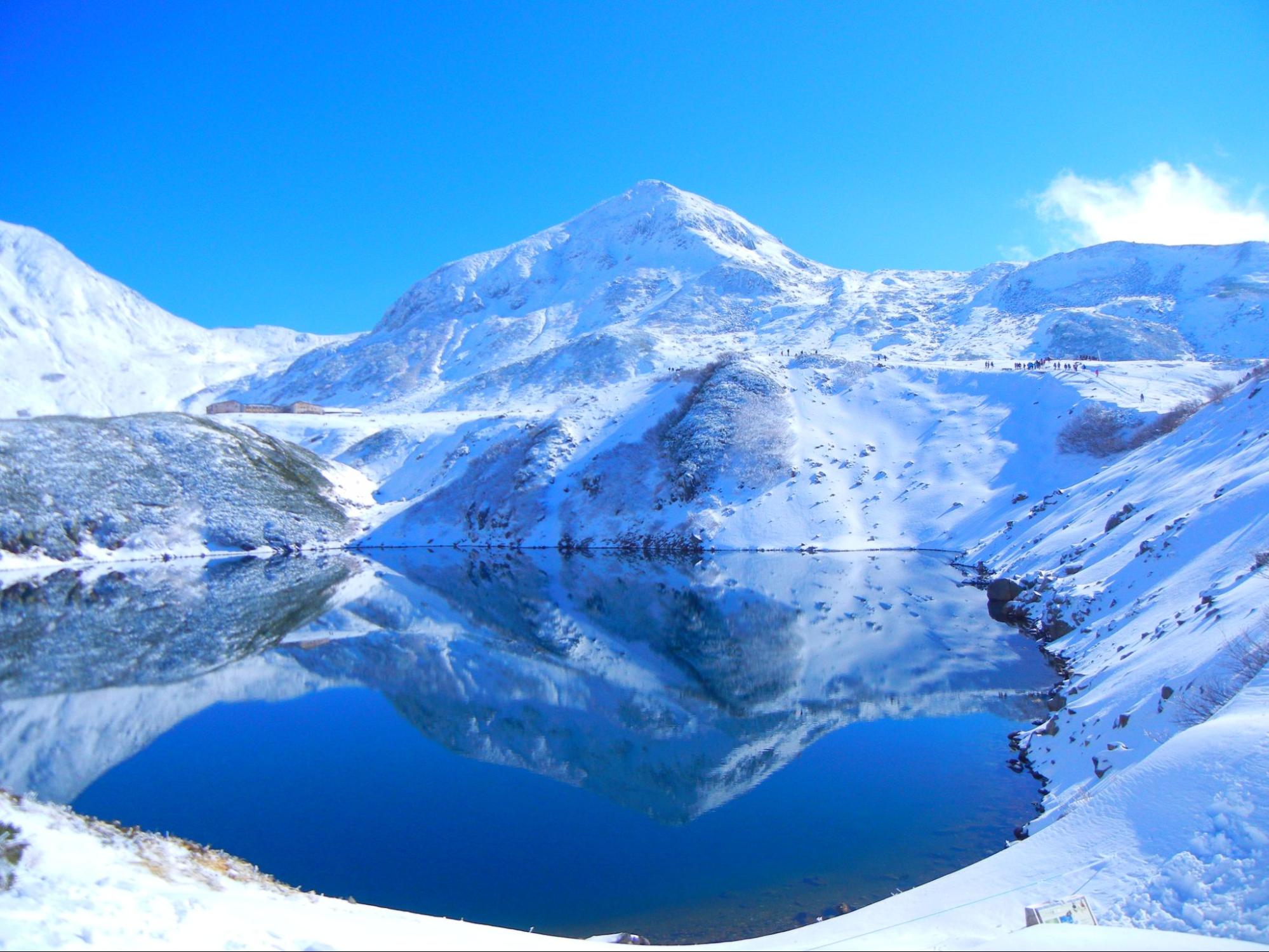 Image credit: Tateyama Kurobe Alpine Route
Image credit: Tateyama Kurobe Alpine Route
Murodo (室堂) is the highest point along the Tateyama Kurobe Alpine Route, and is home to multiple hiking trails of varying difficulty. The scenery changes depending on when you visit Tateyama, so if you are expecting a magical winter wonderland, visit early in April,
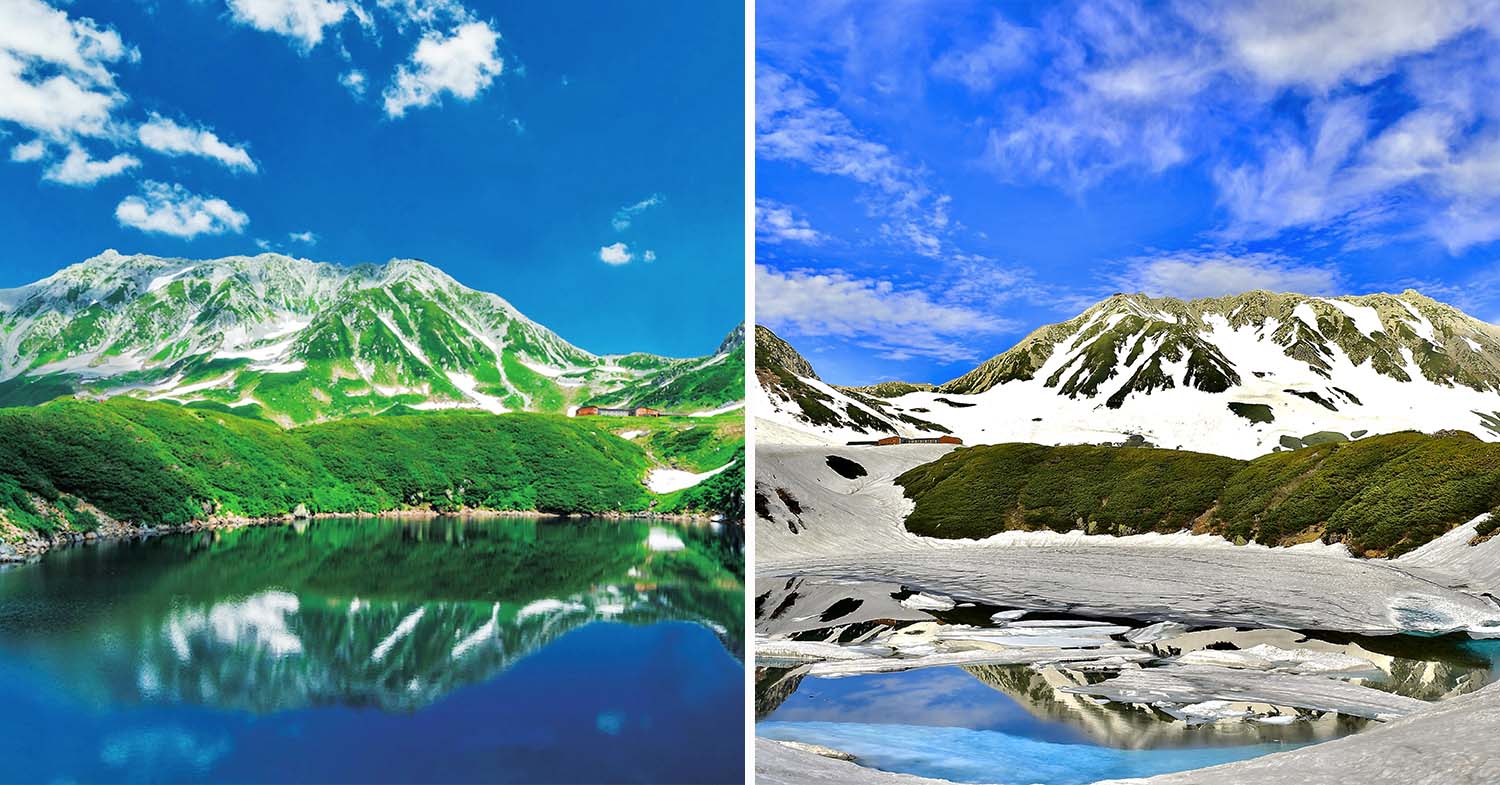 Image adapted from: Tateyama Kurobe Alpine Route
Image adapted from: Tateyama Kurobe Alpine Route
Murodo offers fantastic views of the surrounding mountains and Mikurigaike Pond, the beautiful crater lake of Tateyama Volcano that is stunning regardless of the season.
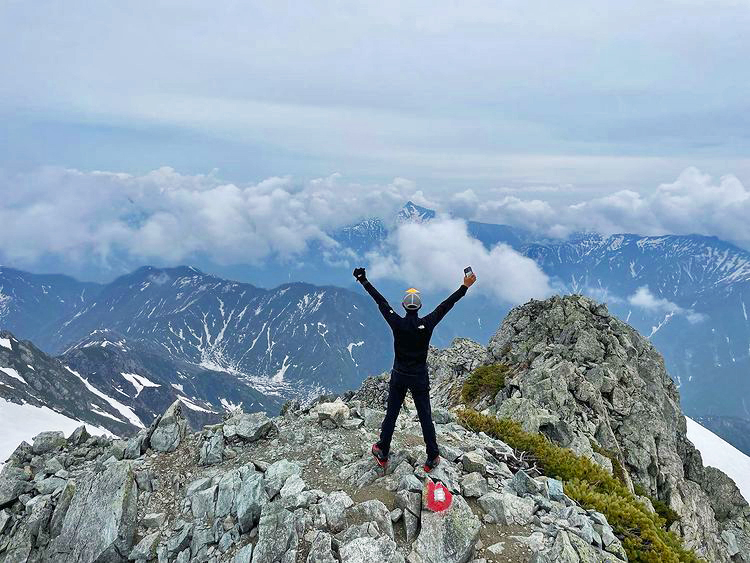
Image adapted from: @is.lexus.is
For beginner hikers, you can hike around the nearby ponds. But those who are looking for a challenge can attempt to ascend Mt. Tateyama, one of Japan’s “Three Holy Mountains” along with Mt. Fuji and Mt. Haku.
The hike up Mt. Tateyama takes approximately 2 hours, but the view at the summit makes it worth the journey.
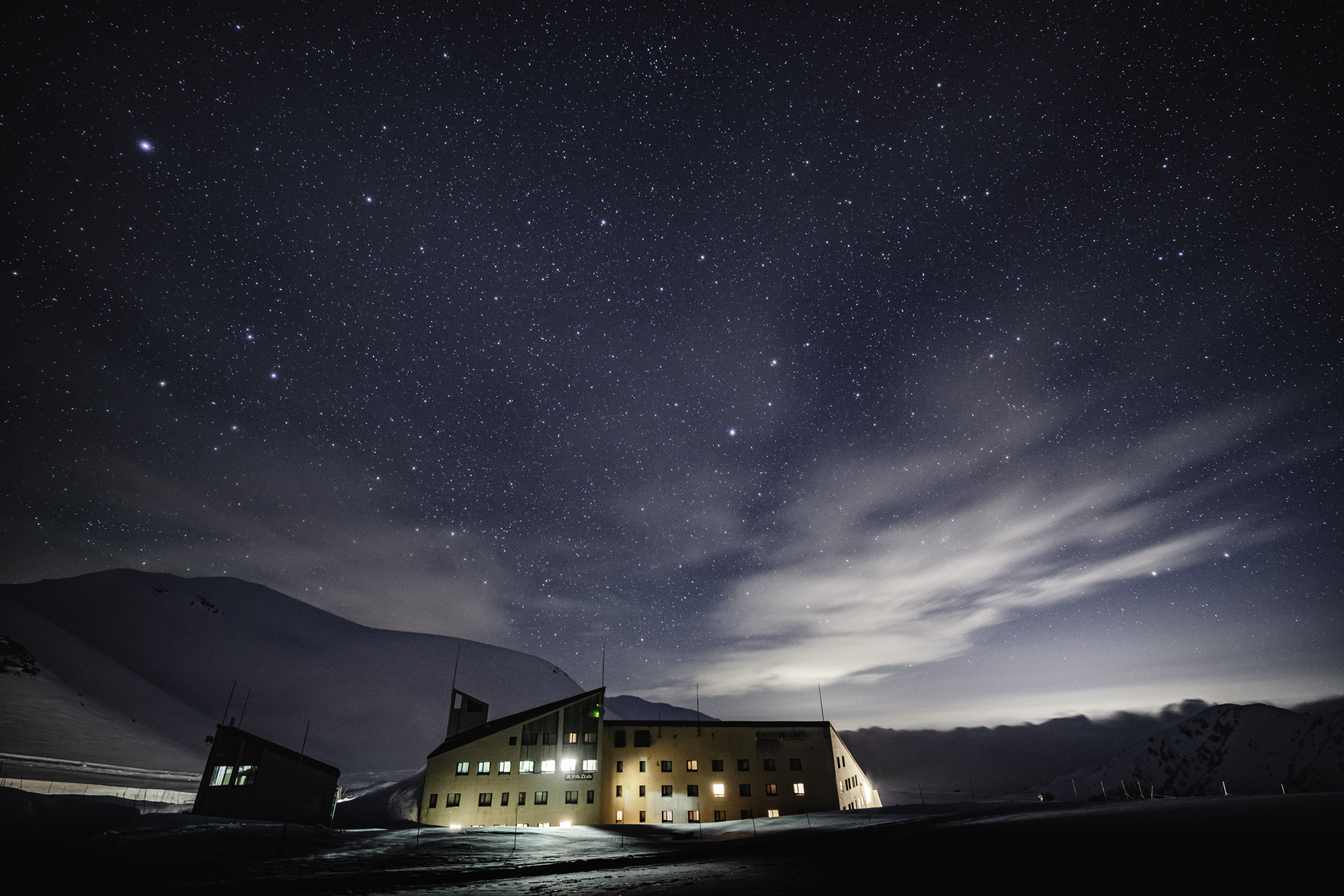 Image credit: Tateyama Kurobe Alpine Route
Image credit: Tateyama Kurobe Alpine Route
After a long and tired day of hiking, be sure to relax and unwind at Mikurigaike Onsen for a memorable experience. You can comfortably soak in the hot springs and soothe sore muscles while admiring the sea of white just outside.
If you are looking for a cosy place to spend the night, consider Hotel Takayama. The hotel prides itself on being 2,450m above sea level and being close to the stars. Due to its elevation, the humble abode seems like it’s nestled comfortably below a blanket of thousand glittery stars in the night sky.
4. Midagahara
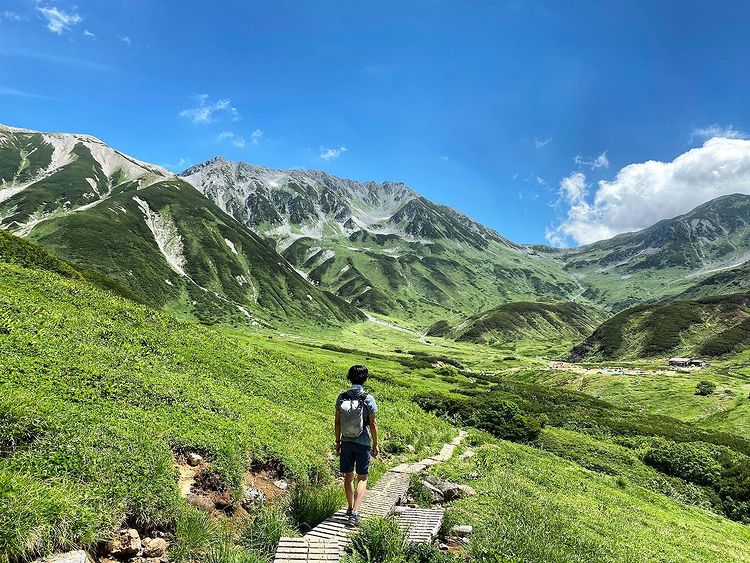
Image credit: @_sukeeee_
Midagahara (弥陀ヶ原) is another popular attraction along the Tateyama Kurobe Alpine Route as it is a beautiful wetland located high in the Alps. The wetlands are especially popular in autumn, when the weather is perfect for hiking.
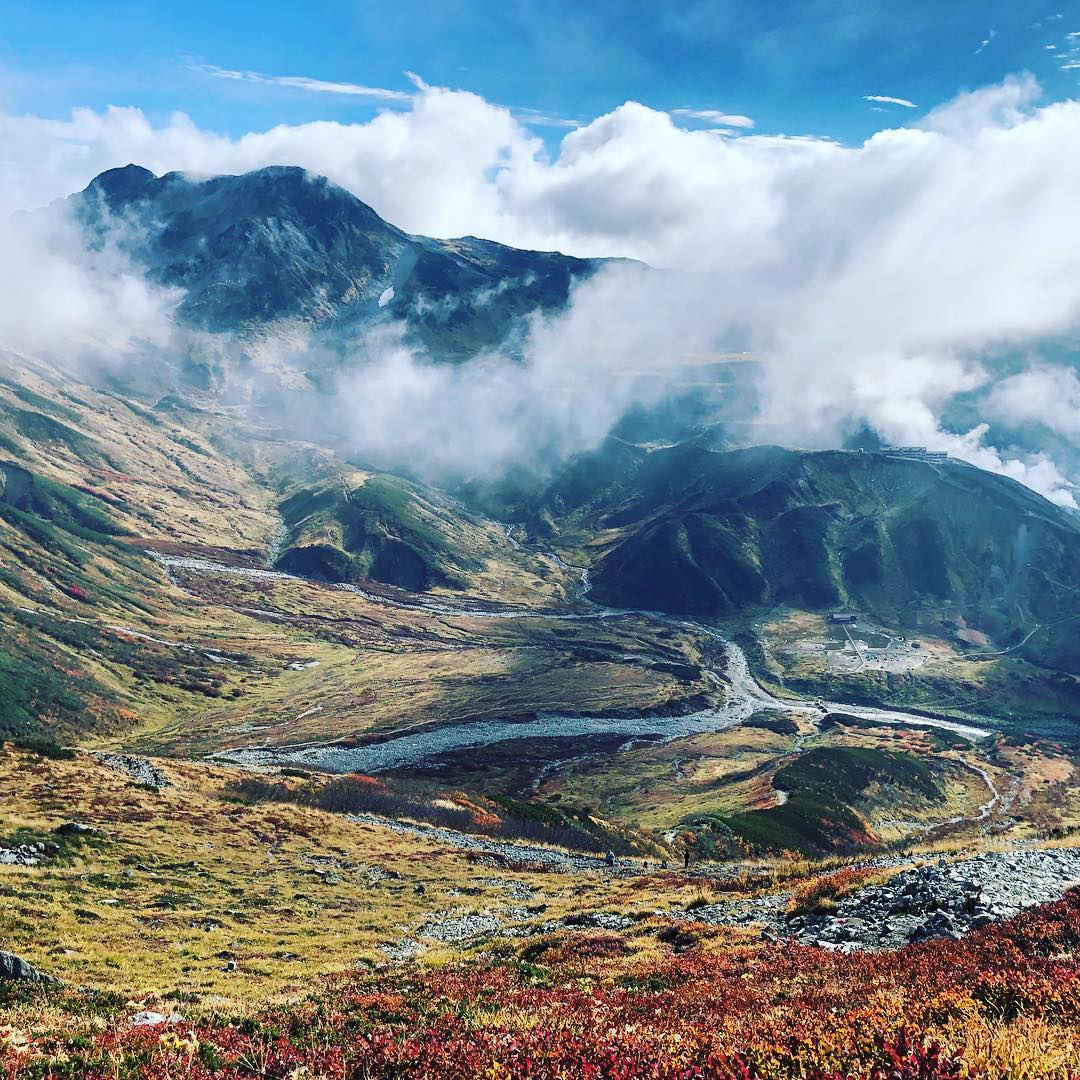 Image credit: @miiiii_1818
Image credit: @miiiii_1818
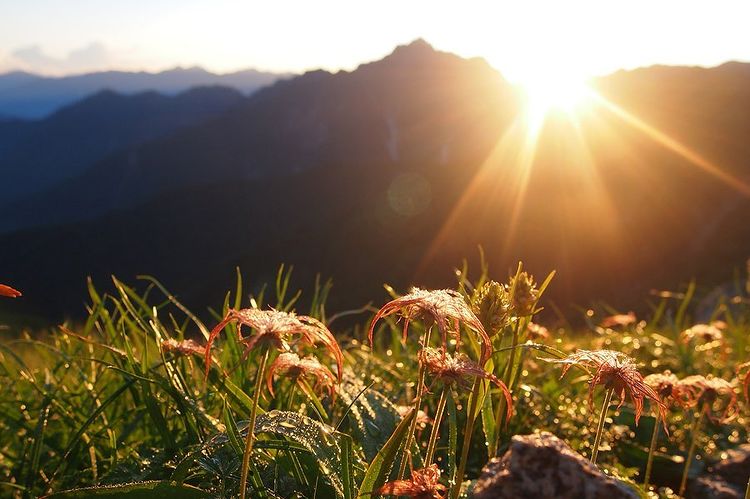
Image credit: @hiromilk__
In fall, many of the plants there adopt the warm and inviting colours of autumn. The bewitching orange hues set against the majestic backdrop of the mountains make for a picturesque sight.
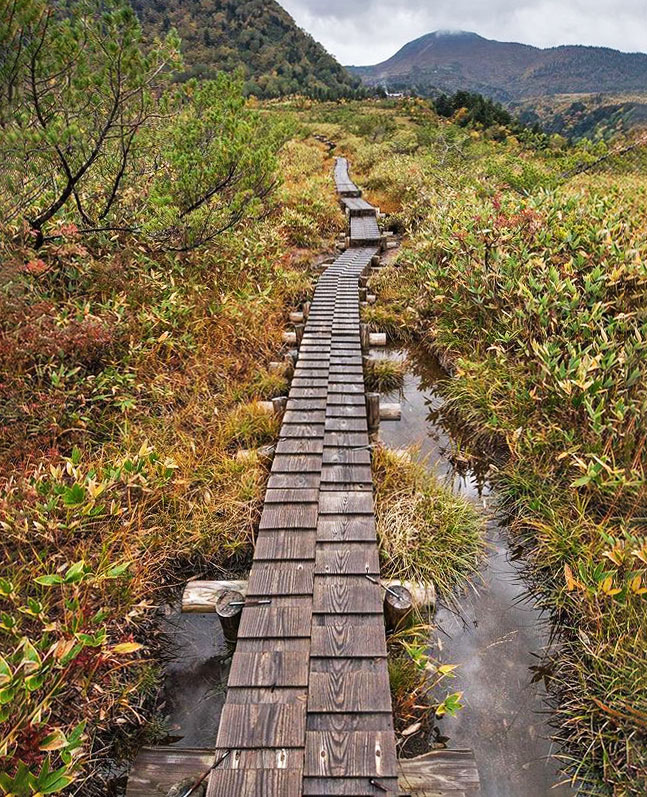
Image adapted from: @yamanet_masa
Many of its hiking trails are lined with wooden planks in order to protect the greenery there, so be mindful of veering off the paths. If you are short on time, don’t worry as the trails at Midagahara do not take up much time; the shortest loop only takes 30 minutes to complete.
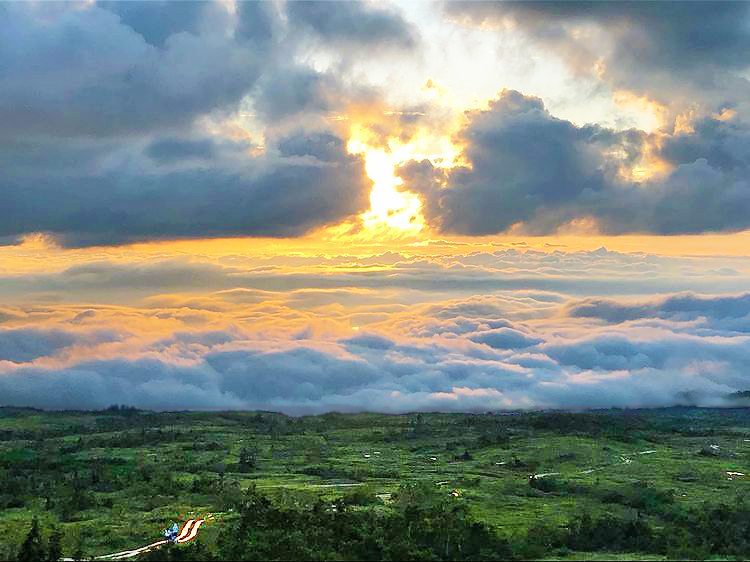
Image adapted from: @midagaharahotel
There is also a 40-minute hiking trail that leads to Midagahara Hotel, should you require a place to spend the night. Being 1,930m above sea level, the hotel provides its visitors with breathtaking views of the surrounding scenery.
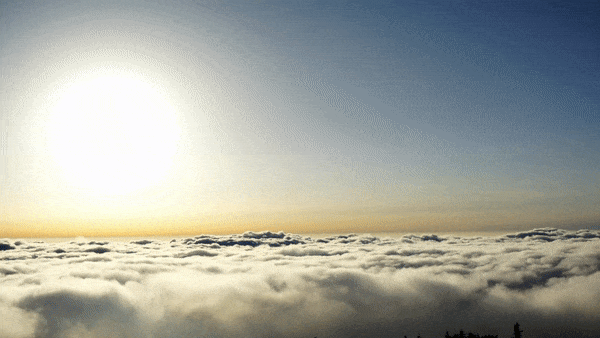
Video adapted from: Midagahara Hotel
The view of the clouds is perhaps the most phenomenal, given that with the right weather conditions, the mass of clouds will tide over just like the waves in the sea. The fluffy, moving clouds create an illusion of a floating sea, and watching the sun slowly sink beneath the “waves” will be an unforgettable experience.
5. Shomyo Falls – Japan’s tallest waterfall
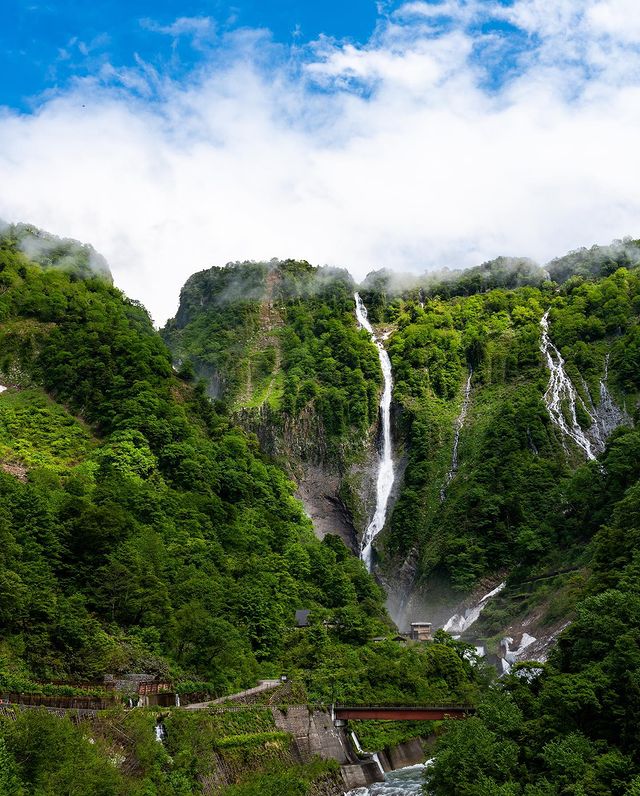
Image credit: @cmasac
Standing at 350m, Shomyo Falls (称名滝) is Japan’s highest waterfall. Its name is derived from the sonorous roar of the waterfall, which sounds like shoumyou (称名) – a Buddhist chant.
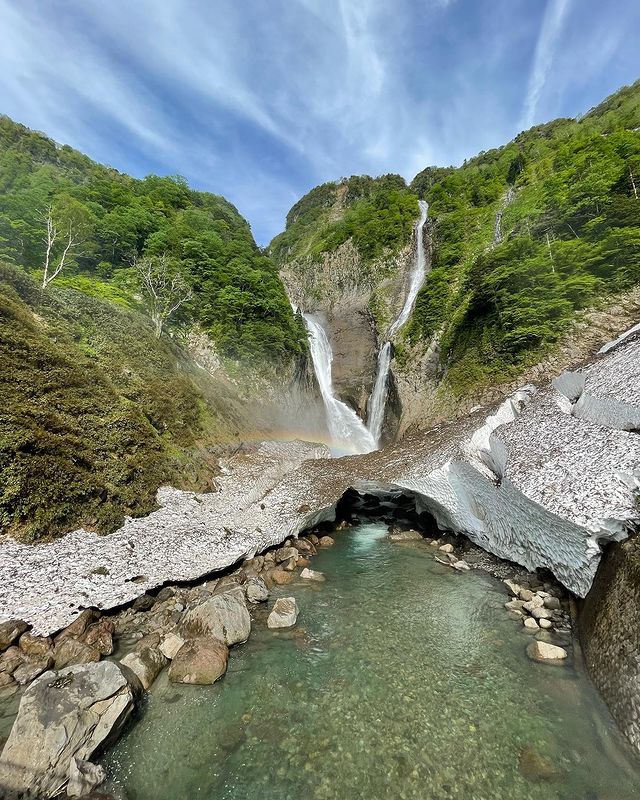
Image credit: @mariezombie
The best time to visit the falls is in spring and summer, when the water flow is at its peak. When spring starts, the snow will start to melt and create an abundance of water flow for the gushing waterfall.
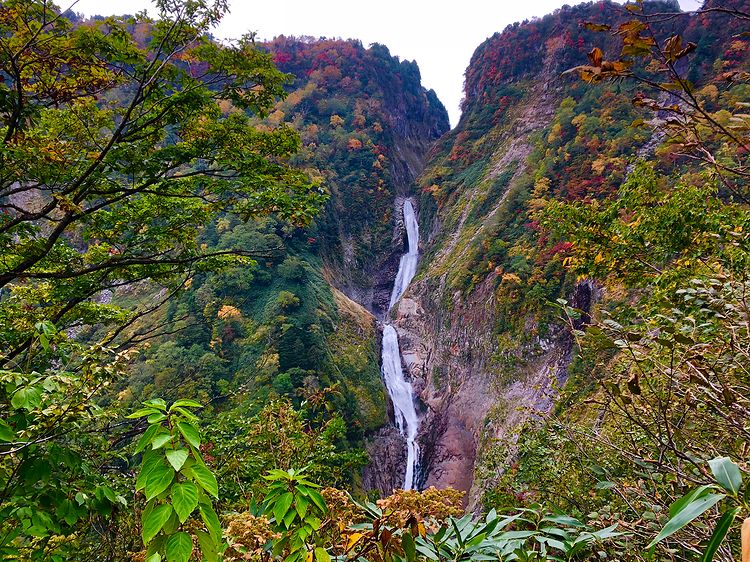
Image credit: @reiko_shimazaki
But Shomyo Falls is just as charming in the autumn – the sight of foliage in warm shades of yellows, oranges, and reds perfectly frame the crashing waterfall.
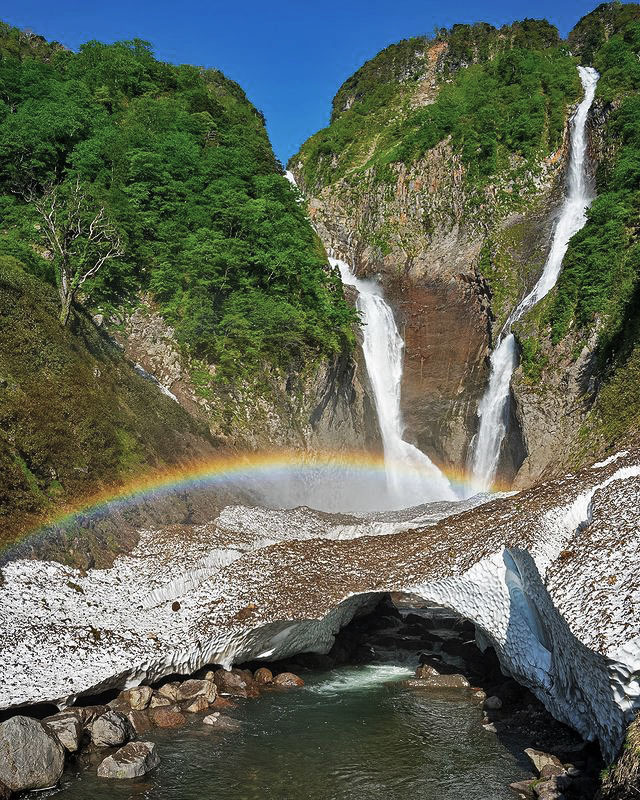
Image adapted from: @kk0896jp
If you are lucky, you may even get to see a pretty little rainbow created by the reflection of light hitting the water. The blinding white waterfall, surrounding greenery, and a beautiful rainbow on top of it all would be the perfect artistic muse for a Bob Ross masterpiece.
6. Packing for a trip to Tateyama Kurobe Alpine Route
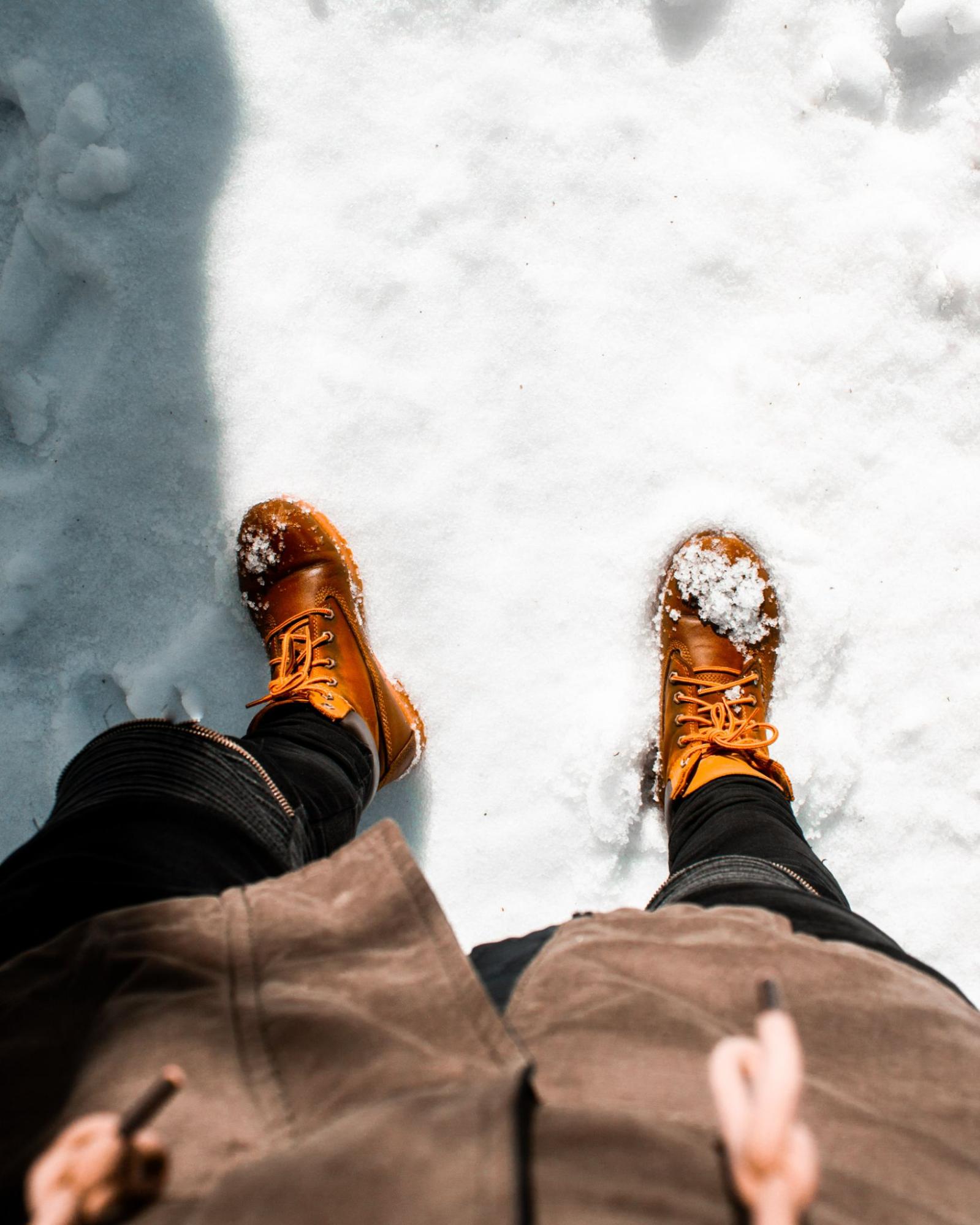 Image credit: Rabie Madaci
Image credit: Rabie Madaci
The first essential item to pack for a trip to Tateyama Kurobe Alpine Route is a good pair of snow boots, given that you’ll be trekking deep in snow. Snow boots will not only allow you to have a solid grip on the snow, but also keep your feet dry and toasty.
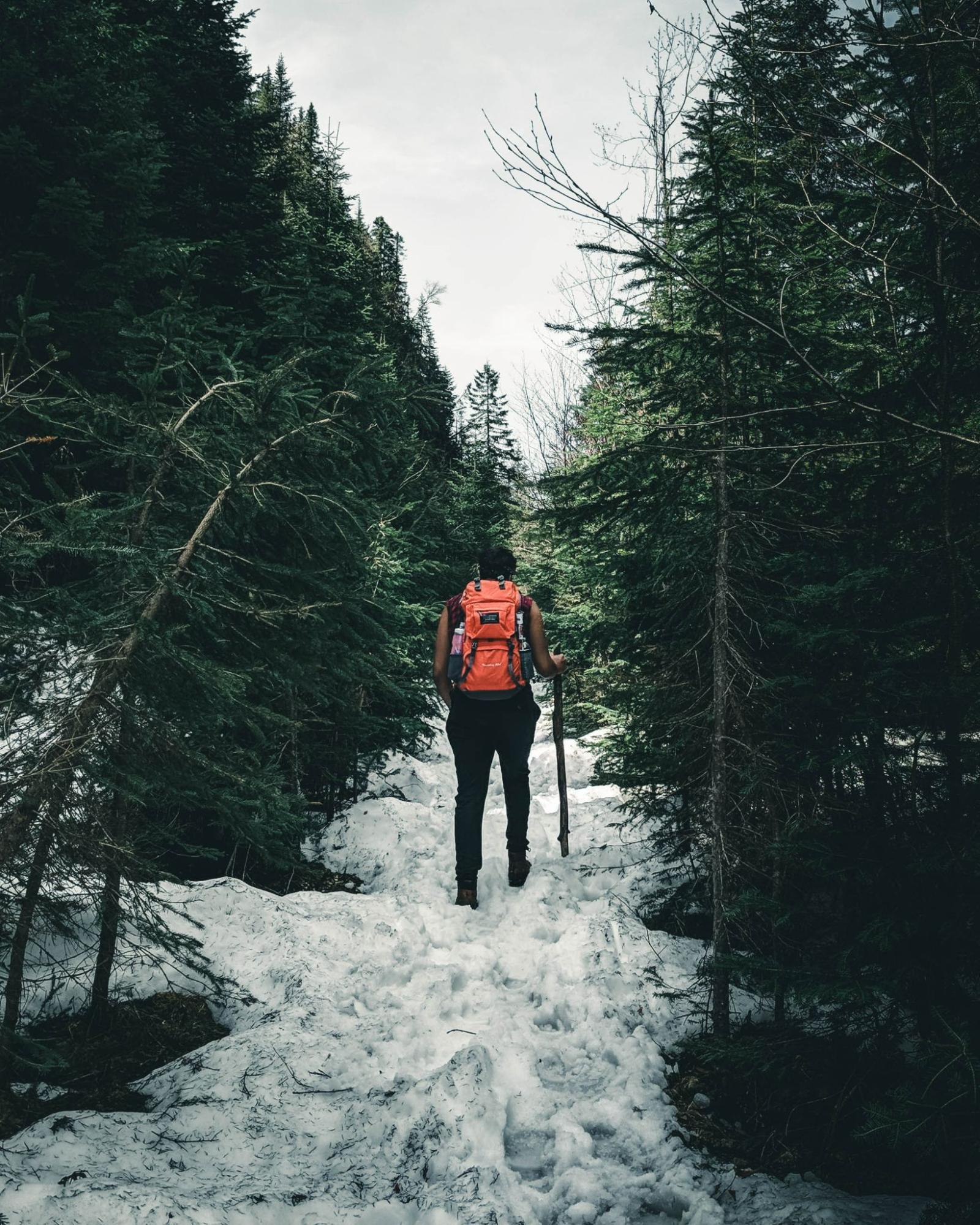 Image credit: Ali Kazal
Image credit: Ali Kazal
For those who have no experience trekking in snow, especially on uneven ground, hiking sticks will be extra useful for keeping your balance. The snow is also deep in certain areas, so be extra careful about where you step, lest you sink in.
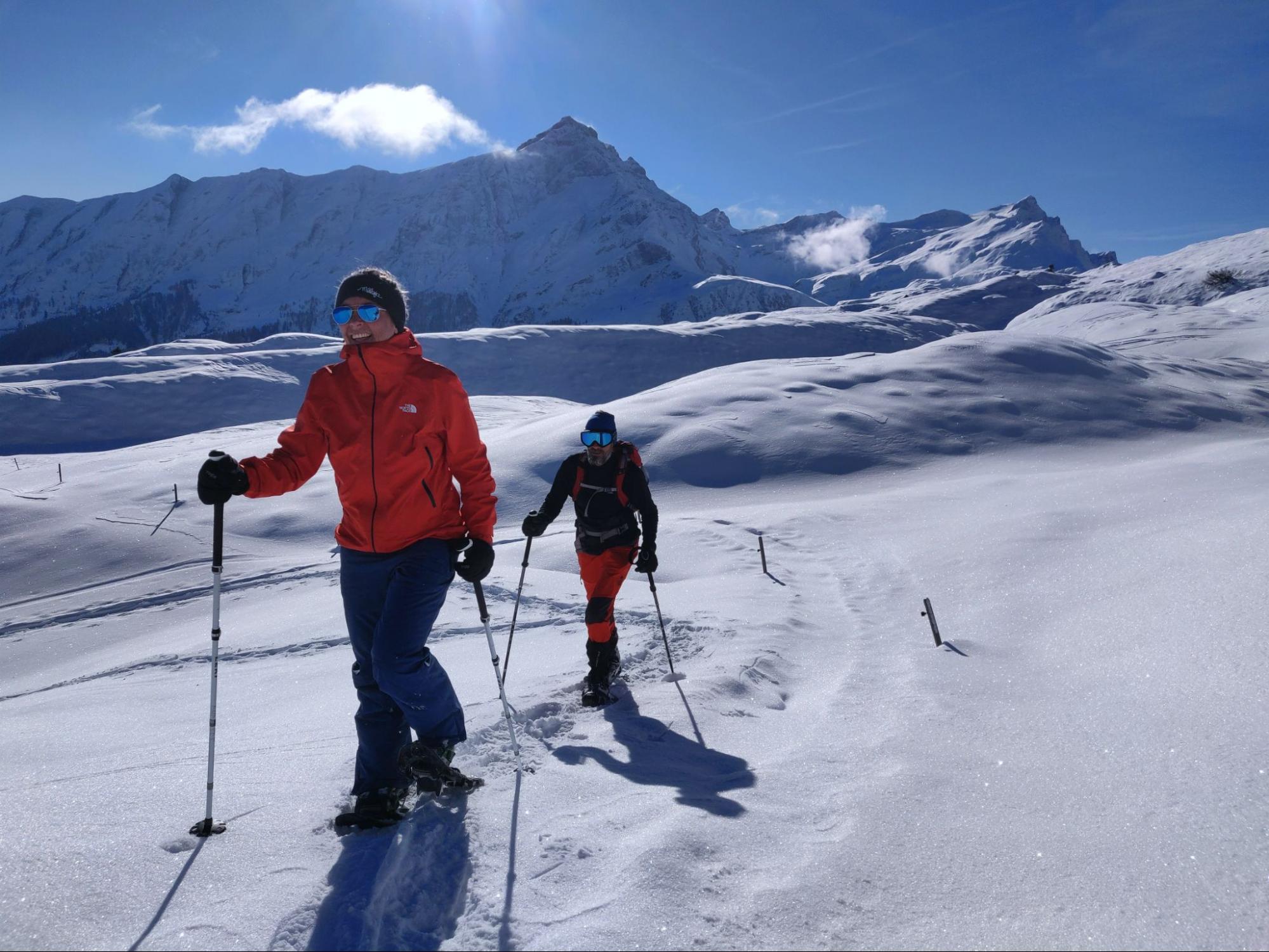 Image credit: Stéphane Fellay
Image credit: Stéphane Fellay
The immaculate white blanket of snow may be what you came here for, but it is actually harmful for your eyes. Snow reflects UV rays from the sun, so make sure to bring along a pair of sunglasses and remember to put on sunscreen – you can get sunburnt if you don’t!
Although temperatures at Tateyama are generally low, it can get surprisingly hot while you hike. As such, make sure to dress in warm layers that can be easily removed when it gets hot.
7. Ticket information
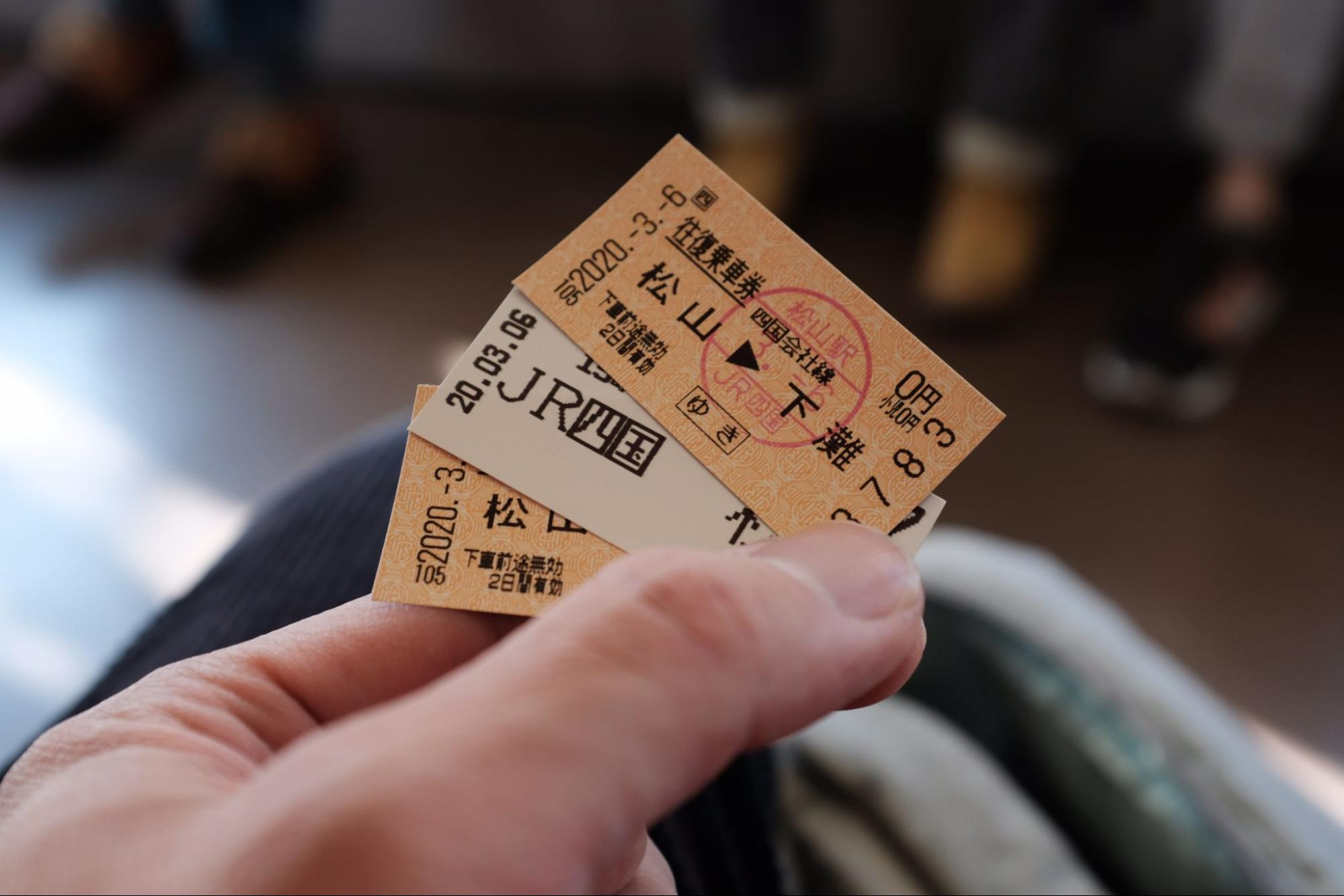 Image credit: Mak💛💙
Image credit: Mak💛💙
Tickets for all stations are available at Dentetsu Toyama and Ogizawa Stations.
Allot an extra 20-30 minutes as a buffer if you are planning to use their baggage forwarding service as time is needed to make the arrangements for your baggage.
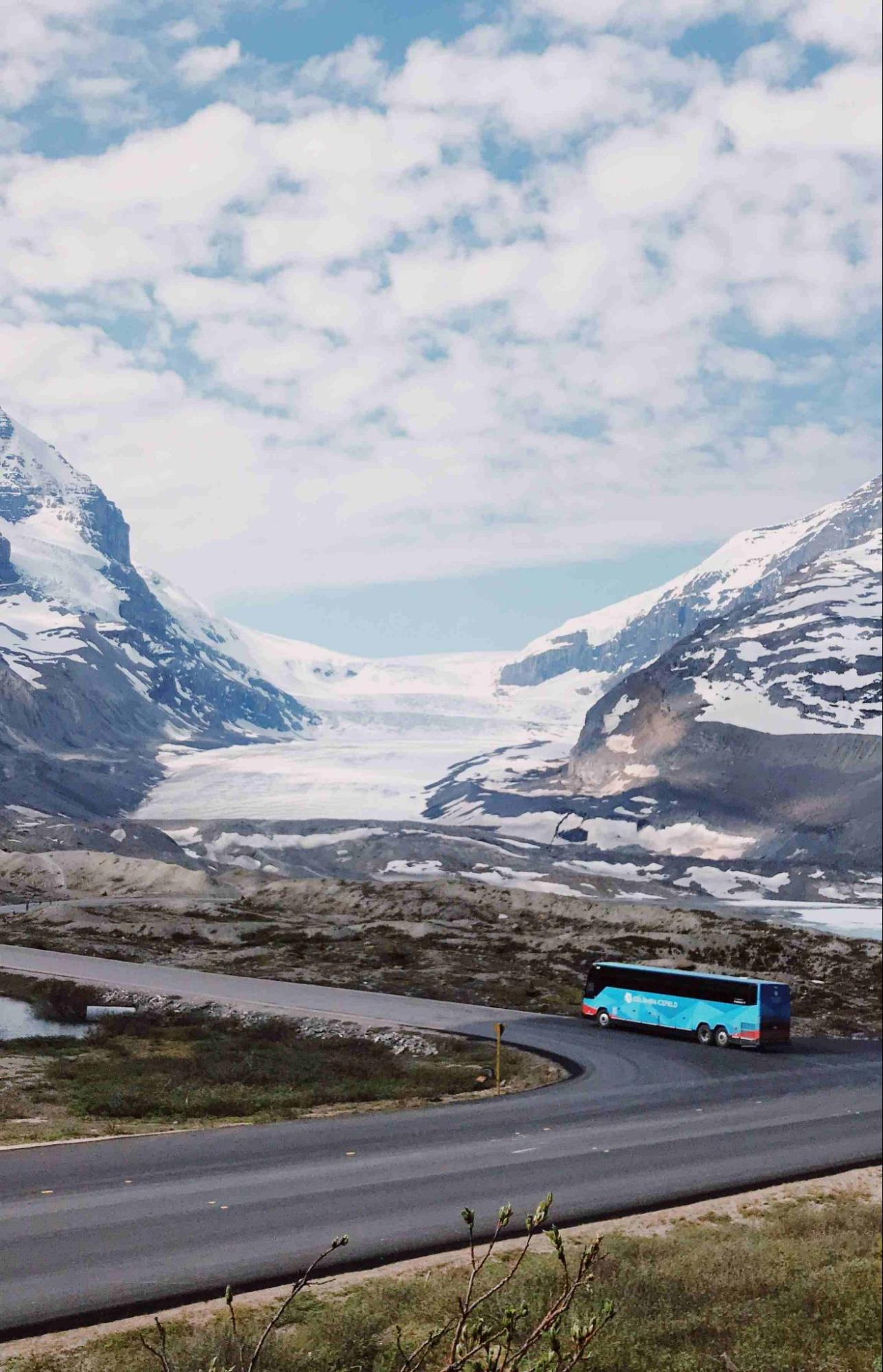 Image adapted from: Rafelia Kurniawan
Image adapted from: Rafelia Kurniawan
There are multiple modes of transportation available – highland buses, cable cars, and ropeways – that will bring you to different areas on the Tateyama Kurobe Alpine Route. Before purchasing your ticket, check the timetable for each mode of transportation via the official tourism website.
Once you have purchased your ticket, board the Tateyama Cable Car if you are coming from Tateyama Station, or the Kanden Tunnel Electric Bus if you are coming from Ogizawa. Make sure to show up according to the time listed on your ticket.
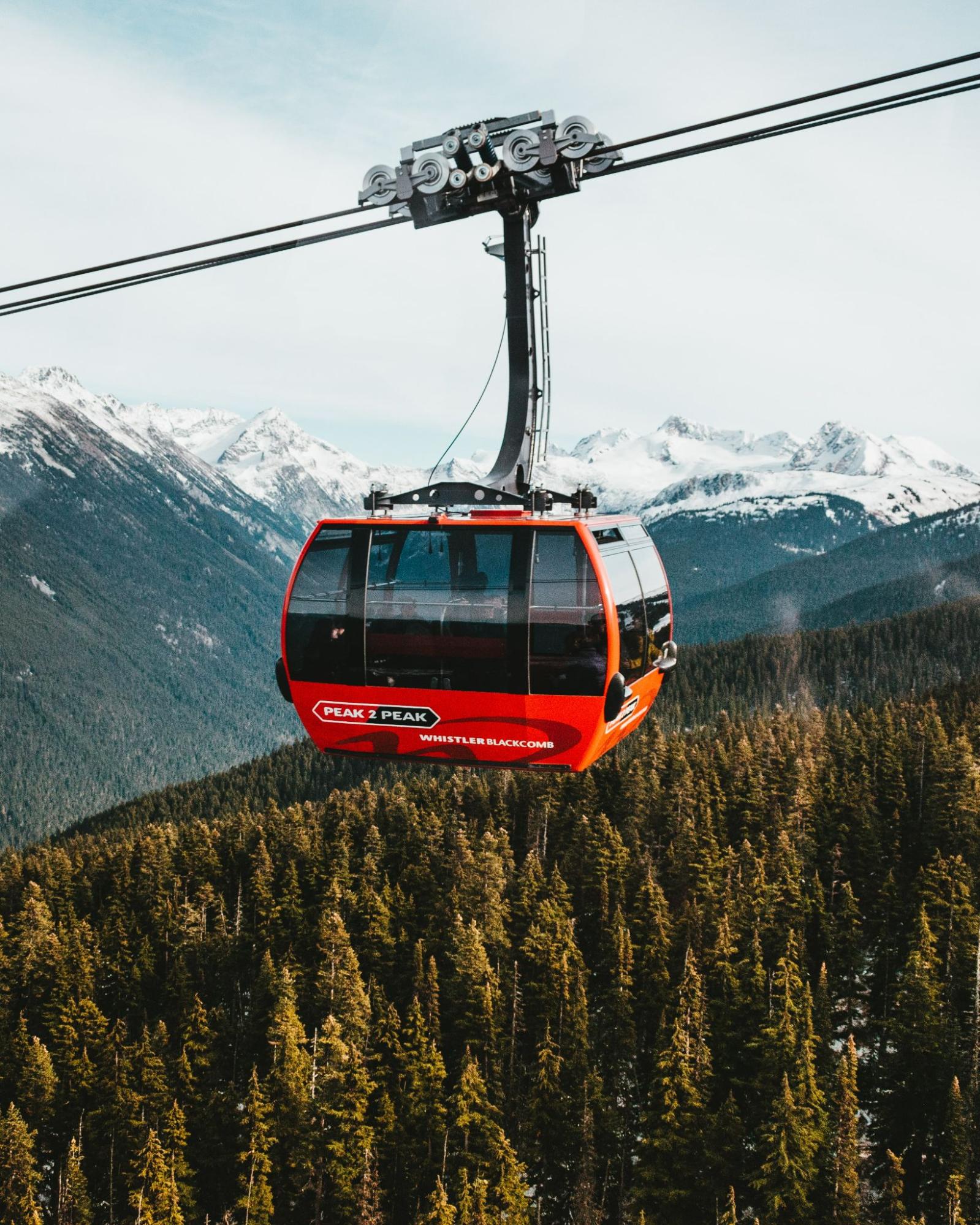 Image credit: Aditya Chinchure
Image credit: Aditya Chinchure
You can even purchase Tateyama Cable Car tickets in advance according to your preferred time and date. These are known as “WEB tickets” and can be purchased on the Tateyama Kurobe Alpine Route website. To purchase tickets, you have to register as a member here, choose the date and time of your ticket, then pay via credit card.
Upon arrival, simply collect your tickets at the ticket machine and you’re good to go.
8. Getting to Tateyama Kurobe Alpine Route
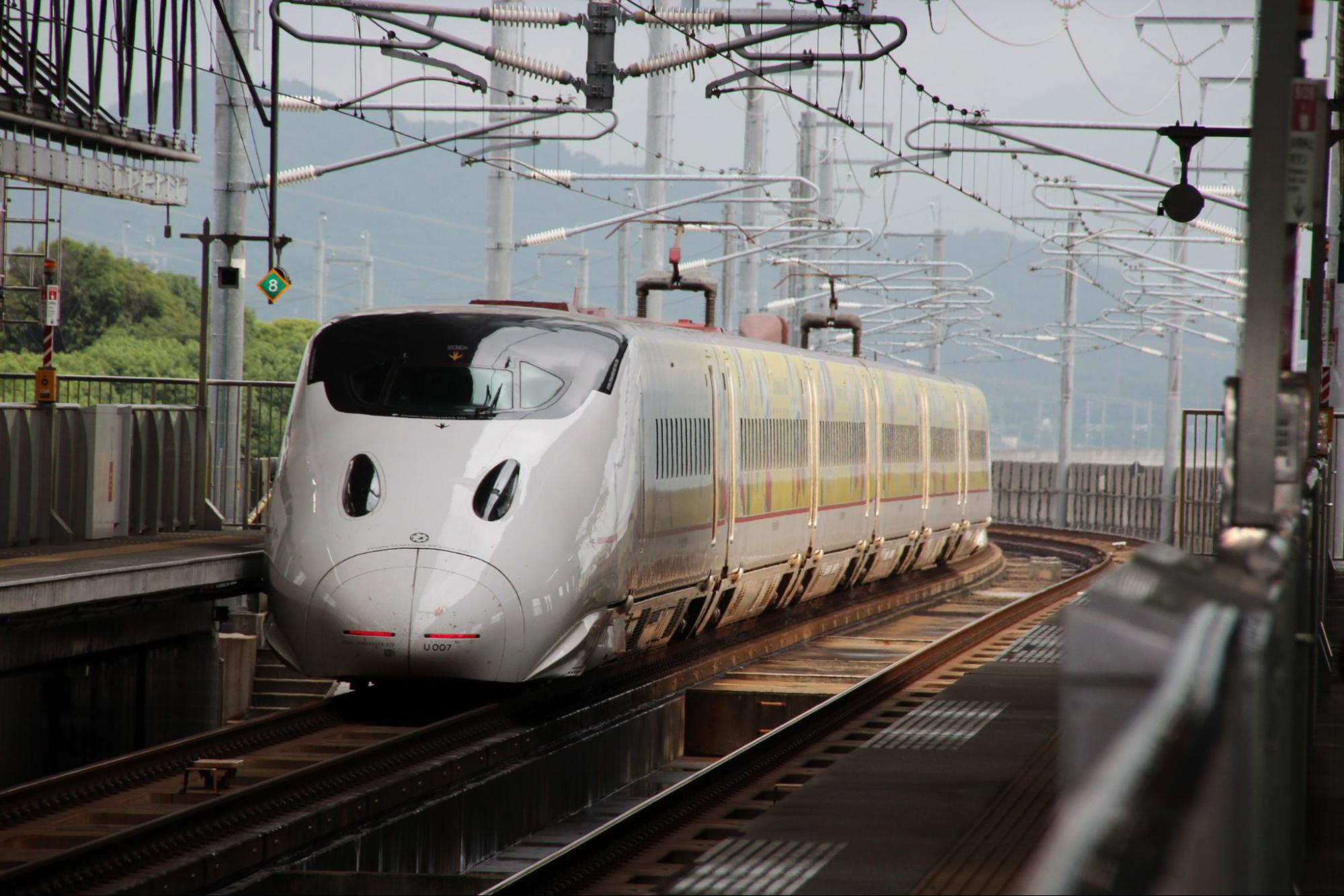 Image credit: Rikku Sama
Image credit: Rikku Sama
If you are coming from Tokyo, you can take the Hokuriku Shinkansen from Tokyo Station to Toyama Station, which costs ¥16,440 (~USD121.65) and takes about 2 hours. If you have a Japan Rail Pass, the trip from Tokyo Station to Toyama Station will be covered by the pass. Otherwise, book your train tickets on the Shinkansen website.
Once you arrive at Toyama Station, it will only be a 2-minute walk to Dentetsu Toyama Station, where you can purchase your tickets to Tateyama Kurobe Alpine Route.
 Image credit: 江戸前鰻
Image credit: 江戸前鰻
Alternatively, if you are coming from Nagano, you should travel to Ogizawa instead. There is an express bus that will take you from Nagano to Ogizawa in just under 2 hours. The trip from Nagano to Ogizawa costs ¥3,100 (~USD22.95). Check the bus timetable here.
Tateyama Kurobe Alpine Route guide
Touring Tateyama Kurobe Alpine Route in Japan should definitely be on your bucket list as the scenery it promises is simply breathtaking. This is your chance to veer away from the typical tourist path and let loose completely by hiking in vast amounts of snow.
Also check out:
Cover image adapted from: @miiiii_1818, Tateyama Kurobe Alpine Route, and @_sukeeee_

Drop us your email so you won't miss the latest news.

